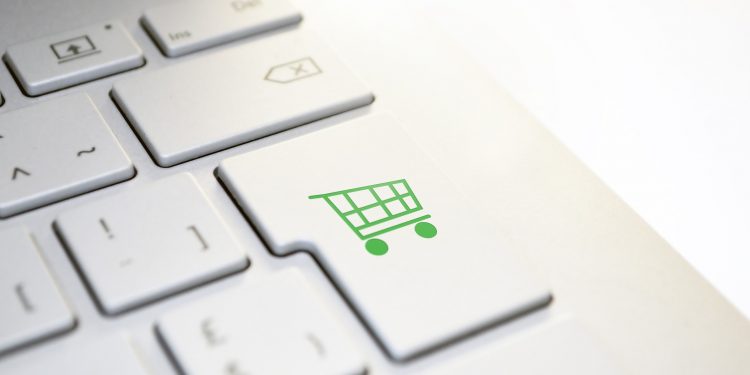2020 has transformed many aspects of life, and the upcoming holiday season will be no exception. Shoppers have migrated the bulk of their shopping to online channels, while merchants have been forced to enhance their digital capabilities. In other words, we’re all in store for a very different holiday shopping season. And it could shape the years to come.
Here in the U.S., many big-box retailers like Target and Walmart have already announced Thanksgiving Day retail store closings to guide consumers online, while Amazon Prime Day kicked off earlier in October to accelerate the start of the holiday shopping season.
Customization at the final and arguably most crucial step of the e-commerce experience – the payment page – is essential this holiday season. Especially given the substantial purchasing power outside U.S. borders, and the fact that 3 out of 4 global e-commerce purchases are made with nearly 400 types of local payment methods.
The global opportunity is clearly available for merchants who can create consumer-centric payment experiences: 19% of UK consumers shop cross-border with U.S. merchants. A significant slice of their total cross-border e-commerce volume of $46.4 billion. China’s cross-border e-commerce market is worth an astonishing $217 billion, of which 14% shop with U.S. retailers.
This Year’s Holiday Shopping Will Set the Stage for 2021 and Beyond
For merchants, this holiday season is vital for a few reasons. Not only are many retailers relying on Q4 to recoup losses and maintain 2020 sales targets, but their holiday performance will also serve as a litmus test for digital experiences moving forward. A poor shopping experience could lead to losing a customer permanently, while a seamless one can ensure lasting loyalty.
Getting ahead of the curve now is crucial; 47% of global shoppers are more interested in shopping online for the holidays this year compared to last year, and this trend is expected to accelerate even further in 2021.
The next few months will accelerate a digital arms race for merchants looking to develop the best possible e-commerce experiences for shoppers.
Expecting a Digital-First Holiday Season
As many physical retail locations will either be closed or at limited capacity this holiday season, the next few months could be the biggest event in e-commerce history. Besides, why would consumers want to wait in line at a department store in the middle of the night on Black Friday when they could receive the same deal from the comfort of their couch at any time? Especially in 2020, when crowded brick-and-mortar locations come with enhanced COVID-19 risks and expected product shortages.
This trend of a digital-first holiday season may be new to the U.S., but around the world, the pandemic has only further fueled existing behaviors. Take China’s Singles’ Day or 11.11, for example. The shopping holiday, which takes place each year on November 11th, was created by Alibaba and quickly became the world’s largest online shopping event – often bigger than Prime Day, Black Friday and Cyber Monday combined. Each year, the event has toppled sales forecasts. 2020 will be no different, as sales expectations are around the $40 billion mark.
A key element of Singles’ Day success is its ability to expand globally. With origins in China, Singles’ Day is now a global phenomenon with shoppers from many regions partaking in the shopping event and Olympic-sized celebrations. This year’s event will serve as a great benchmark for the rest of the holiday season and offer guidance for merchants looking to replicate similar growth via global e-commerce sales.
Merchants must take a page from the Singles’ Day playbook and prioritize their digital channels more than ever over the next few months to capitalize on an industry-bending moment for retail.
E-commerce Personalization Needs to Reach An All-Time Peak
As e-commerce demand and merchant competition continue to rise, local payment methods will be vital for merchants to tap into global markets and offer seamless experiences. Bank transfers, e-wallets, cash-based digital payments and local cards are the dominant payment methods globally, used in more than 70% of all consumer transactions.
U.S. merchants will need to broaden their payment options beyond the typical MasterCard and Visa, or risk missing out on shoppers outside U.S. borders. This could mean offering cash-enabled e-commerce methods like Oxxo or Rapipago to attract LATAM shoppers, where 17% of all online transactions are made via cash, or leveraging e-wallets like Alipay or WeChat pay for APAC consumers, which make up 46% of the region’s online payments.
Across the globe, we are seeing a surge in demand for mobile, Buy-Now-Pay-Later (BNPL) methods like Afterpay or Klarna to help offset some of the economic impacts of the pandemic. This demand for mobile payments will be crucial as up to 1 billion hours will be spent on mobile shopping apps in Q4 2020, up 50% from Q4 2019.
This holiday season will serve as an e-commerce strategy template for years to follow. Retail is at a crossroads, and the impacts of the next few months will help chart the path for 2021 and beyond. Merchants that enable payment flexibility by catering to global shoppers will prepare themselves for lasting success, ensuring they are on the right side of this industry transformation.










